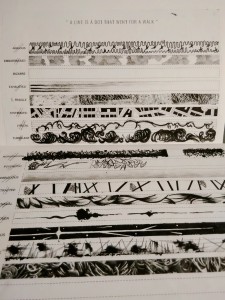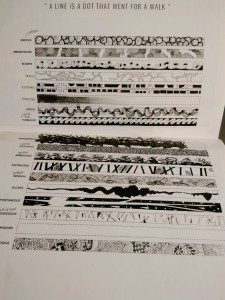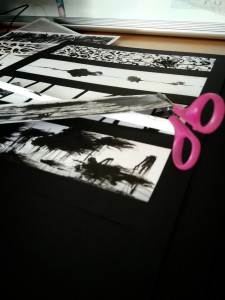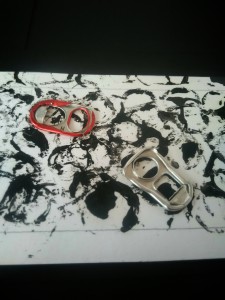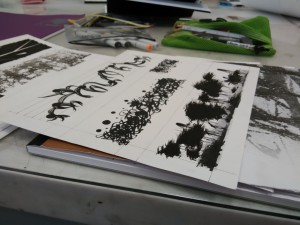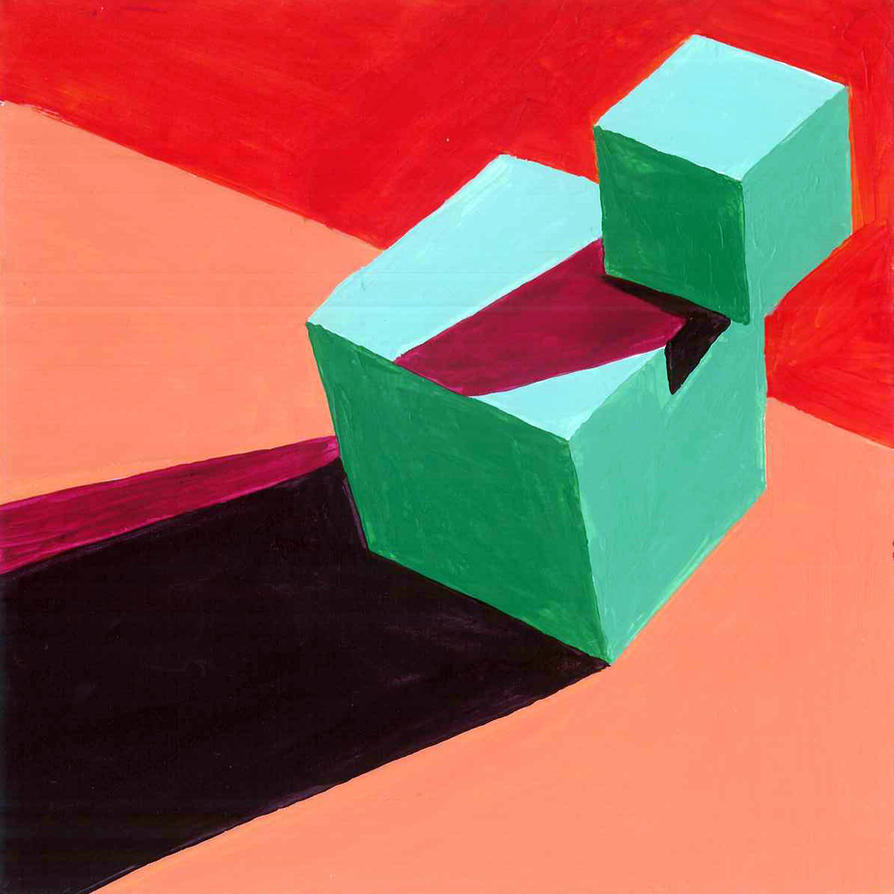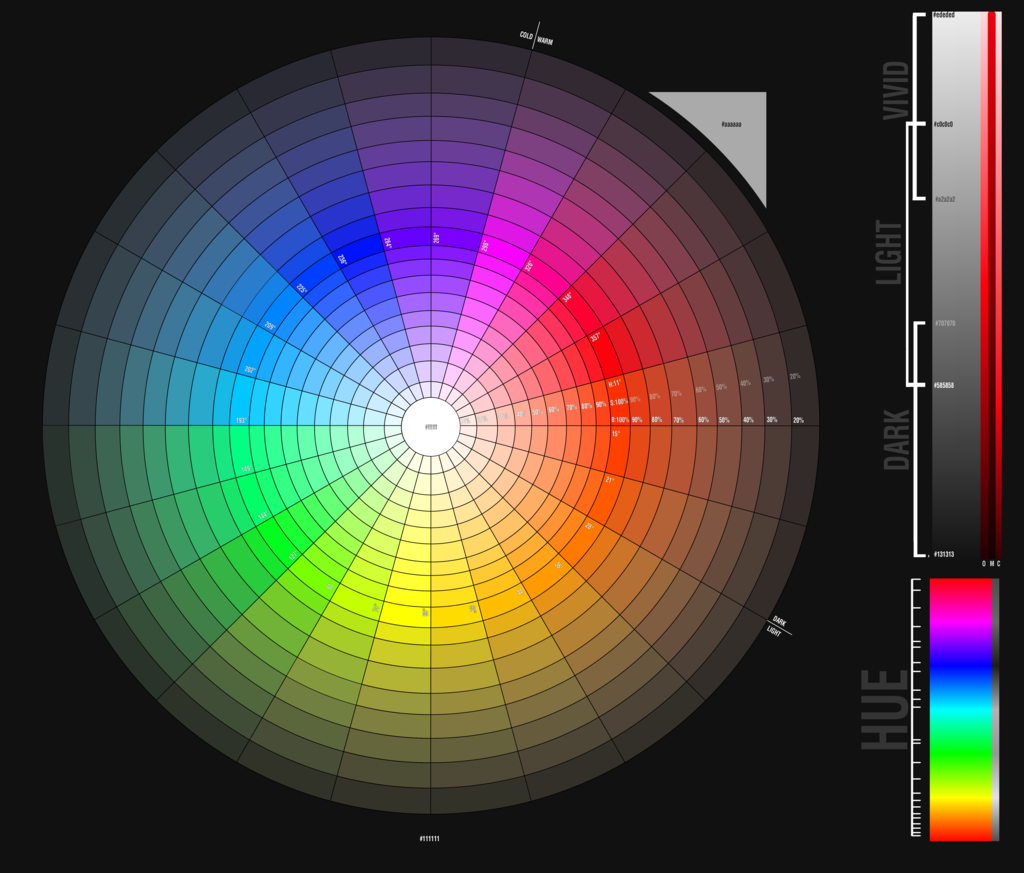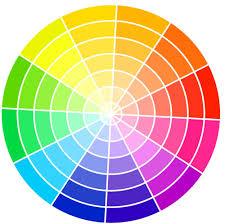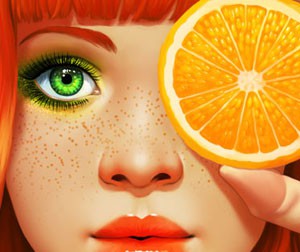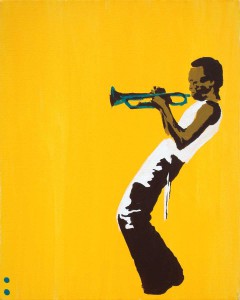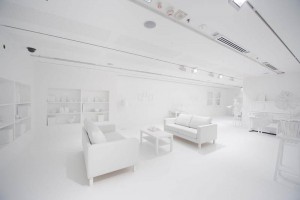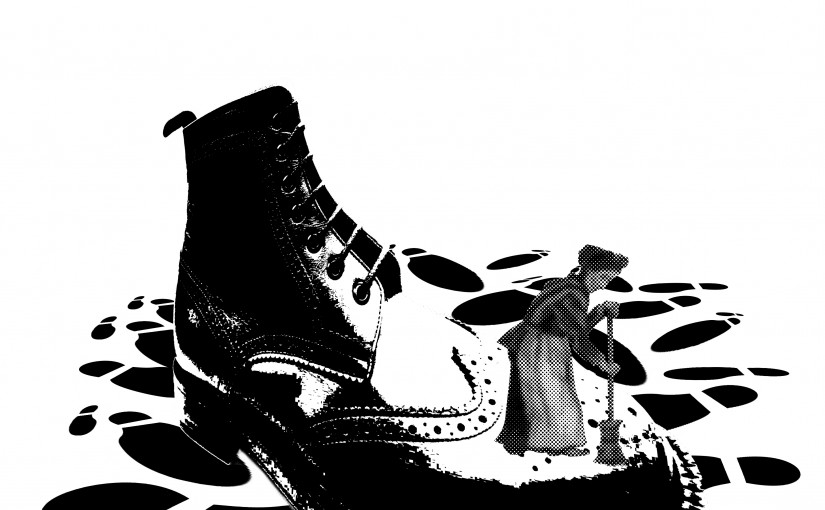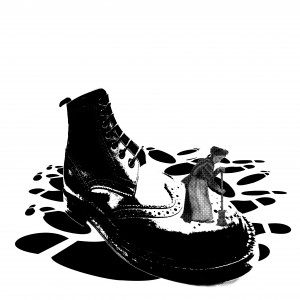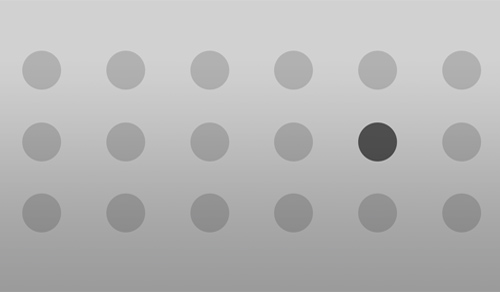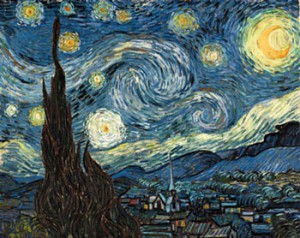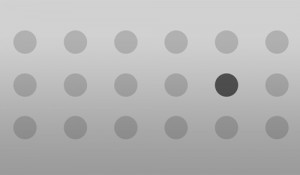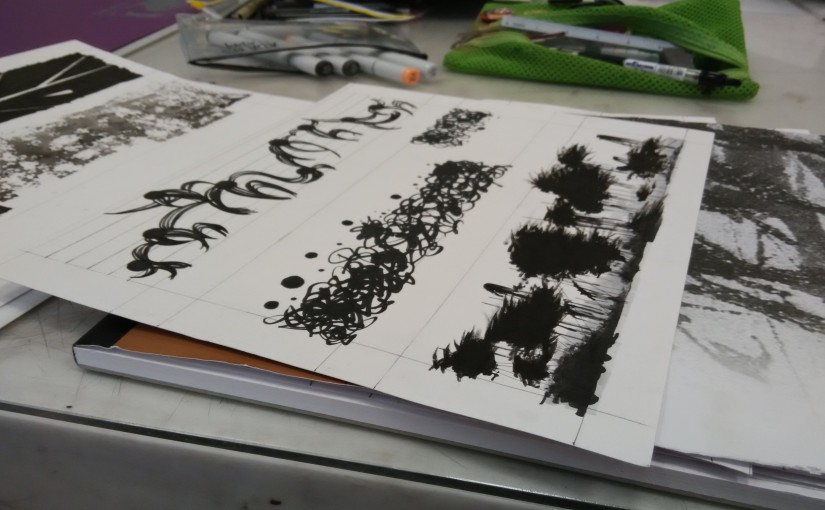18 words, 18 designs, each represents the feelings I have for that particular word.


The above picture shows the process of my designs for the first 8 words.
Anxious – For my first design, I drew circles with spirals facing at different directions. Those circles represents people eyes that are looking at me which caused me to feel nervous. Furthermore, the spirals represents the dizziness and sickness I would feel when being the center of attention. For my second design, I drew butterflies inside the curved lines. This represents the saying “butterflies in stomach”. However, I chose design 1 for my final work since design 2 maybe too abstract.
Embarrassed – I drew crosses all over the paper. With those crosses, I form various empty circles in my final work. The blushes-like crosses represent the feeling of hiding. There is also law of closure shown in my design. The circles are like holes that expose oneself, causing one to hide back into the crosses.
Bizarre – For my Design 1, I drew alien-like creature to represent something weird. However, I thought it was too simple. So for Design 2, I dipped sponge into ink, hoping to create many different holes, to represent a condition “Trypophobia”, the fear of holes. However, the effect created by sponge was not obvious. Therefore, I use my design for “Indecisive” as my final work for “Bizarre” since the designs do remind me of weird patterns and scenes in “Alice in Wonderland”, the feeling of being in another dimension.
Exhausted – I used charcoal to drew straight line across the paper at different strength. Then I smudged and erased the charcoal the the end. At the start, the texture of the charcoal is vivid, however towards the end, the charcoal fades away, representing the tired feeling of not wanting to continue ones work.
Fragile – For my first design, I drew lines of glass crack to represent fragile. I also tried painting ink over puzzle pieces and print it on paper to show that puzzles are also easily destroyed. However, since the print from the puzzle was not that obvious, I chose Design 1. For my final work, instead of drawing lines, I cut out tapes to create glass shatter, painted over the tapes and then removed the tapes.
Systematic – I am inspired by city map when designing this. Thus, I drew city map for my work since city planning is systematic. The design is harmony in whole despite the different shapes used.
Lyrical – I drew 5 lines over the paper to represent the music scores and black circles to represent notes. There are curves connecting the circles. Each circle has 4 curves stretching out which represent someone dancing. With music and dance, it gives the feeling of something beautiful. It gives movement to the design.
Turbulent – At the start, I drew small repeated waves pattern. However, it does not represent turbulent well. Thus, with the concept of waves, I drew bigger waves among smaller waves to create the contrast in sizes to show the turbulence in the design.

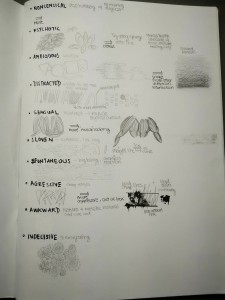
The picture above shows rest of the words.
Nonsensical – I used markers to draw random curves and dots across the page to show the chaos. In my final work, I left a gap between the design to shows that being nonsensical, one does not need any reason. I also inverted the design at the end to show that the design is not restrictive.
Psychotic – There are various designs for this word. I tried drawing repeated eyes or smiles to show the psychotic feeling. However, I chose to use tissue paper dipped in ink to create a messy lines of different thickness. It represents a unstable mental state, messy and unable to think clearly.
Ambiguous – I used smoke-like patterns to represent being blur and unclear. I tried drawing smoke but I felt it was not blurry enough. Thus, I used penknife to create smoke-like markings on the paper and shade over those markings. Hence, the smoke pattern would be blurred to create the ambiguous feeling.
Distracted – The straight lines and the waves at the back are contrasting each other in terms of shapes. Hence, both of them are distracting to the viewer to see two totally unrelated shapes.
Sensual – I drew muscle-like shapes to represent physical contact and intimacy. I also shaded the work to create a 3 dimensional effect to further pull the viewer closer to the work.
Sloven – I drew straight line with ink blots in between to show carelessness of oneself not being able to draw even a simple line.
Spontaneous – I drew explosion for spontaneous to represent something to be sudden and unexpected. The start of the explosion is located at the golden ratio to create a space and movement for the explosion.
Aggressive – For Design 1, I drew triangles and shape edges to represent aggressive. However, it was not aggressive enough, hence in my Design 2, I added blood splatters to represent violence and gore.
Awkward – I used pull top can tabs to create prints on the paper. I also used a flower to create a print. The flower will be the awkward element since it is the only organic object among the inorganic object prints.
Indecisive- At first, I used all my rejected designs above and mix them together to create patterns for indecisive, since there are a lot of things going on in a indecisive person mind. However, the design also better represents bizarre. Hence, I created repeated patterns using question marks. A indecisive person will have many questions. The questions marks are at different orientation and sizes to show confusion. Furthermore, upon closer look, one can see a white and black question mark within a box, hence creating an interesting pattern.
Pictures below are more progress of my work.
